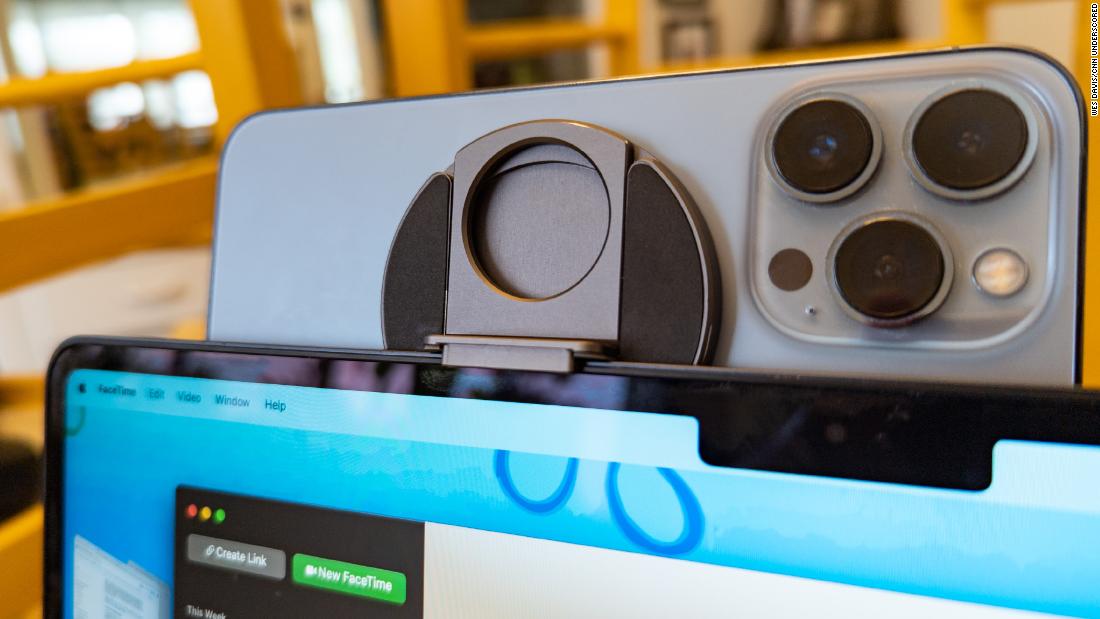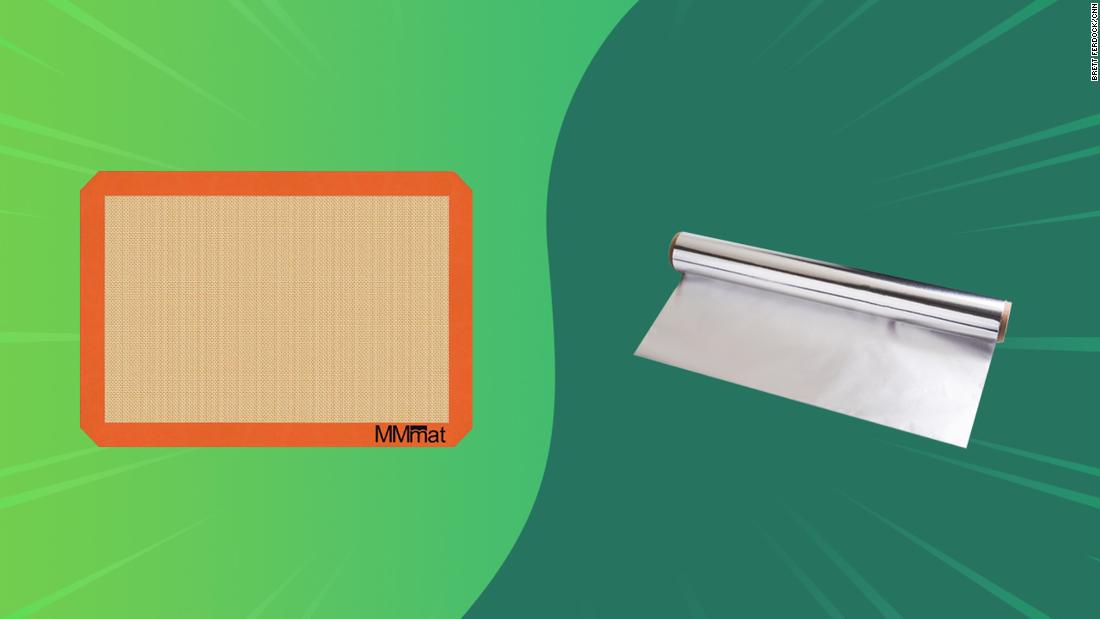Best Gaming Headsets in 2024: Wired and Wireless
We've tested gaming headsets ranging from budget models to fancy wireless ones with 7.1 surround, and everything in between. Based on our testing, here are the best gaming headsets.

If you’re reading this, you already know the importance of good audio when it comes to gaming, but it’s tough to find out which is the best gaming headset for you among the sea of options. As is the case when you're looking for the best gaming mouse or best gaming keyboard, there are several facets to consider. But when looking for the right headset, you'll want to factor in budget, sound quality, comfort, and the kinds of features most important to you. And the easiest way to find that personalized experience is to know exactly what you’re getting into and relying on those who have first-hand knowledge.
I’ve reviewed plenty of headphones and gaming headsets in my time, so I’m familiar with what makes them great and I’ve put my expertise and ears-on experience to use here. Each pick was made with careful consideration for what each headset offers as a whole, but also for the aspects they excel in most based on their category. With that in mind, I’ve included options for the best budget headset like the HyperX Cloud III and the best high-end option in the Audeze Maxwell, for example. But more sophisticated features like virtual surround, active noise cancelation, or customizable EQ profiles can be defining for certain wireless headsets like the JBL Quantum One, Turtle Beach Stealth Pro, or Logitech G Pro X 2.
TL;DR: These Are the Best Gaming Headsets
- SteelSeries Arctis Nova Pro Wireless - Best Overall
- HyperX Cloud III - Best Budget
- Audeze Maxwell - Best High-End
- Turtle Beach Atlas Air - Best Wireless
- Turtle Beach Stealth 500 - Best Budget Wireless
- Beyerdynamic MMX 300 Pro - Best Wired
- Sennheiser HD 620S - Best Audiophile
- JBL Quantum One - Best Surround Sound
- Logitech G Pro X 2 - Best Esports
- Turtle Beach Stealth Pro - Best Noise-Canceling
- Razer Hammerhead Pro HyperSpeed - Best Earbuds
This guide is intended to be a comprehensive look at the best options based on specific categories in which certain headsets prioritize or do better than the competition. This doesn’t mean there aren’t amazing headsets outside of the ones I’m recommending, but these are all headsets I can vouch for based upon the first-hand testing done by my colleagues and I. I will also be updating my picks for best gaming headsets as new ones come out and I test more of what’s out there, so be sure to check back periodically, or whenever you need some advice on choosing a new gaming headset.
This guide contains contributions by Danielle Abraham and Adam Matthew.
SteelSeries Arctis Nova Pro Wireless
Best Gaming Headset
It’s hard not to fall in love with the SteelSeries Arctis Nova Pro Wireless. You still get all the great features of the previous SteelSeries Arctis Pro Wireless with some new technology including active noise cancellation and improved audio all around. Using a hybrid noise-canceling system with four mics, you can drown out harsh noises from outside your room to the ambient hum of loud fans.
Most importantly, the Nova Pro offers some fantastic sound quality out of the box with bold and balanced audio. Its spatial audio onboard is crucial as well, so it's easy to hear enemy footsteps around the corner or gauge the distance of action happening in a competitive shooter. And you can make some next-level customizations to the EQ settings and game-chat mix with Sonar and the SteelSeries GG app – good luck going back to your ordinary headphones for anything but listening to podcasts or the news.
With SteelSeries’ latest top-end headset, we see the biggest design shift since the start of the Arctis lineup. The Arctis Nova Pro Wireless sports telescoping arms on its adjustable headband so it can better accommodate larger head sizes. The earcups are also slimmer and sleeker, giving off less of a gaming headset vibe and more of a look akin to wireless headphones without sacrificing the comfort SteelSeries headsets are known for. And one of our favorite features remains intact with a few upgrades – the hot-swappable rechargeable battery system. This means that when the battery runs low during a gaming session, you can quickly change it out without having to plug in, giving you wireless freedom indefinitely.
The Arctis Nova Pro is one of the best headsets you can buy right now. It’s well-rounded with uniquely robust features, great sound quality for gaming, and comfort to keep you going. Take our word for it – in our Arctis Nova Pro headset review, it earned a rare 10 for all the aforementioned reasons and more.
HyperX Cloud III
Best Budget Gaming Headset
No matter which version of the HyperX Cloud headset you go with, you get a quality product. If you’re running on a budget and want to get the most bang for your buck, I always recommend the wired HyperX Cloud III, which can often be found under its $100 base price. It punches above its weight with impressive sound and mic quality and great comfort, plus it’s built like a brick house so you know it’s not going to fall apart through the years.
Out of the box, the Cloud III impressed me with its build and durability – its aluminum frame can be flexed and contorted in any which direction without ever feeling like it’s going to break. Stretching the headset out to fit on your head is super easy and you can toss them on your desk without worrying about damaging them. It's built for comfort as well with dense foam earpads wrapped in a leatherette (just be aware it tends to get a bit sweaty), although its clamp force may be a bit much for some.
At the end of the day, it’s all about sound quality and the Cloud III handles various frequencies wonderfully. In my Cloud III headset review, I played a ton of Valorant and felt comfortable tracking enemy footsteps and enjoyed the balanced audio in Final Fantasy XIV, which this more budget-friendly headset handled gracefully. And assuming you’re on a budget, you probably don’t want to spend extra on a decent microphone – so don’t worry, the mic clarity on the Cloud III was equally as impressive.
Audeze Maxwell
Best High-End Gaming Headset
You can ask anyone who has used the Audeze Maxwell if it’s worth its price tag, and you’re going to get the same answer. It’s a resounding yes, and that includes me. It sports a sleek, nondescript design akin to many audiophile-style pairs of headphones and performs just like one as well. Sometimes I need to break away from the misconception that wired is always better for sound quality, especially when the Audeze Maxwell proved me wrong.
Its 90mm planar magnetic drivers jump out from the spec sheet – and while bigger drivers doesn’t always mean better, this is one case in which the audio experience matches the driver size flex. Overall clarity, balance across frequencies, and a rich natural audio profile make this headset stand out from the rest of the pack. While the aforementioned SteelSeries Arctis Nova Pro is the one I recommend overall for its robust features, it’s hard to compete with the Audeze Maxwell purely in the audio department.
That said, while the Maxwell is comfortable, it does land on the heavier side of gaming headsets. It’s built like a tank, but if you’re okay with that, then it’s more of a non-issue. When you get a great mix of sound quality, battery life, and features such as toggleable noise isolation, it’s easy to justify its high price.
Turtle Beach Atlas Air
Best Wireless Gaming Headset
Turtle Beach has been a major player in audio for several console generations at this point, and I think the Atlas Air marks a peak in its gaming headsets. I can’t get over how comfortable it is to wear thanks to its soft, cushioned earpads and super-light clamp force. Its headband and overall construction also feel durable despite being a very lightweight headset. When I reviewed the Atlas Air, I just couldn’t get over how these felt to wear all day, which is also a credit to the sports mesh-like upholstery that prevents heat and sweat.
It’s also rare to find open-back gaming headsets, which gives the Atlas Air an upper hand on providing a full and spacious audio experience on top of its great overall sound quality. Of course, a drawback of open-back is the lack of natural sound isolation, so be aware of whether or not the ambient noise of your gaming environment is suited for such a thing.
Turtle Beach packs some neat features into its Swarm software with customizable EQ profiles and presets that work well for getting more out of the headset (just ignore Superhuman Hearing – it’s not worth the fuss). Between music, gaming, and spatial audio, the Atlas Air performs beautifully and it’s currently one of my favorite wireless gaming headsets available – which I got into detail with in my Atlas Air headset review, where it earned a 9.
Turtle Beach Stealth 500
Best Budget Wireless Gaming Headset
As I mentioned above, Turtle Beach knows what it's doing when it comes to gaming headsets, and even if I go down the pricing hierarchy, there are still impressive headsets like the Stealth 500 to be found. Although it’s quite bulky in its physical design, I found the Stealth 500 to be easy to wield thanks to its super flexible headband and durability, which also translates to solid comfort that’s easy on the ears.
More importantly, the sound quality you get from the Stealth 500 is nothing to scoff at. While it may struggle in higher frequencies, which tend to sound a bit crunchy, its strong bass and clear mids make games sound full without coming across as artificial. With the Swarm software’s Signature Sound profile, you’ll be set without having to fiddle with too many settings. Its positional audio was great as well, which I sussed out while playing competitive rounds of Counter-Strike 2, so you don’t really need to shell out the big bucks to get that kind of advantage.
Even at this price point, you get Bluetooth capabilities and can swap between devices with the press of a button. While the mic isn’t anything to boast about, it’s serviceable and can be customized in the software as well. It’s no surprise that there are compromises that need to be made in budget-level headsets, but it gets the essentials right, which earned it an 8 in my Stealth 500 review.
Beyerdynamic MMX 300 Pro
Best Wired Gaming Headset
Beyerdynamic is one of the many audiophile-focused brands that have entered the gaming headset space in more recent times. Its latest in the MMX 300 Pro makes slight upgrades over its predecessors in overall design, but brings similarly powerful audio performance. It provides the kind of sound quality you’d expect from studio-grade headphones like the DT 770 or DT 990, but packs them into a wired, closed-back gaming headset that’s easy to wear for hours on end.
What’s almost as impressive is the microphone clarity, which can rival even some mid-range standalone mics. I tend to see built-in mics on gaming headsets as an afterthought, and so long as my voice comes through intelligibly, that’s all I really need from it – but not with the MMX 300 Pro. So if you really want that all-in-one gaming headset, especially for streaming or recording content, you’ll find that in this headset.
Personally, I prefer the intentionality and craftsmanship of a wired, analog-driven headset or pair of headphones and the MMX 300 Pro sounds beautiful right out of the box. Of course, you can potentially get more out of it if you drive them through a DAC or amp, but this headset is tuned with gaming in mind (to emphasize certain sound effects in competitive games) while also delivering the kind of audio experience in other applications you’d expect from headphones at this price range. For all that and more, I gave a 9 to the MMX 300 Pro in my review.
Sennheiser HD 620S
Best Audiophile Gaming Headset/Headphones
Sennheiser has long been one of my favorite makers of headphones, starting with the HD 598 years ago, and over that time, it has adapted its audiophile-centric approach to gaming headsets. I find myself coming back to Sennheiser again and again due to the rich audio experiences they provide and sleek designs that also come with great build quality. The Sennheiser HD 620S is a prime example of that. While I’ve preferred Sennheiser’s open-back options, like the aforementioned HD 598, I very much enjoyed what it did with a new closed-back design in the HD 620S, which excelled particularly while gaming.
The HD 620S sets a new standard for high-end audio by using similar design principles as its lineup of high-end headphones – this means its drivers bring full, balanced, and detailed sound. While spatial audio tends to be better with open-back designs since they give bold sound profiles room to breathe – something that traditional closed-back headsets sometimes struggle with – the HD 620S doesn’t really sacrifice all that much as far as I can tell from several rounds of Counter-Strike 2 and Valorant. There’s a lot of natural sound isolation due to a tight seal around the leatherette earcups, which also turn out to be really comfortable (even though this material does get hot).
There’s a lot of potential in the purely audio department with HD 620S if you drive it through a DAC or amp, and the 6.3mm adapter that comes packaged with it gives you the opportunity to get more out of it. If you’re a self-proclaimed audiophile and want something suited for gaming, I can vouch for the HD 620S as one of the best picks so far.
JBL Quantum One
Best Surround Sound Gaming Headset
If you’re deadset on getting a headset specifically for surround sound, why settle for just one type of surround sound? The JBL Quantum One may be pricey, but it has a lot to offer in terms of options to customize your audio experience, including JBL's QuantumSphere 360 technology as well as DTS Headphone X: v2.0 surround sound. The latter is a high-quality digital surround sound that can make games and movies feel that much more engrossing. QuantumSphere 360 is a bit more involved, and actually takes into account the position of your head, so you can turn your head in real life and all the sounds around you will shift to maintain their relative position.
It's not just nifty surround sound, but also precise, as the Hi-Res certified 50mm drivers offer excellent sound and a 20Hz-40kHz frequency response range. The JBL Quantum One also offers great flexibility with options for both a USB and a 3.5mm connection available (though the latter will limit its capabilities). The JBL Quantum One even includes active noise canceling to help block out any ambient noise, which complements the surround sound to help with the audio immersion. That’s also not to mention that it sounds fantastic even without surround sound, and I wouldn’t recommend it if it couldn’t stand on its own in the audio quality department.
Logitech G Pro X 2
Best Esports Gaming Headset
Logitech has come a long way with its headsets and I thoroughly enjoyed putting the Logitech G Pro X 2 through its paces for my review. It has to be one of the most complete packages I’ve seen from a gaming headset, and it’s superb all-rounder when it comes to sound quality, durability, comfort, and premium features.
For those particularly looking for one in competitive gaming, I like recommending the G Pro X 2 because of how several smaller features add up to make a versatile headset. Seemingly minor things like the included carrying case for portability and the swiveling earcups that let the headset rest easily around my neck are really nice to have. But its sound quality and positional audio are impressive in their own right, which are really the driving force for making a good competitive headset suited for esports-type environments. The default leatherette earpads are comfortable and offer better sound isolation, but in more casual settings, swapping in the included velour earpads gives the G Pro X 2 a nice level of customization. And with a sleek and not-so-gaudy design, using its simultaneous Bluetooth for other devices is a pretty cool cherry on top.
While its overall microphone quality is serviceable, it's the solid sound isolation that works well for communication in high-stress (and potentially loud) competitive settings. At an MSRP of $250, you’re starting to brush up against audiophile-level headsets and headphones, but it's all the features and design decisions around it that make it worth the price tag.
Turtle Beach Stealth Pro
Best Noise-Cancelling Gaming Headset
For a versatile headset that sounds great and features a subdued look, our hands-on testing of the Turtle Beach Stealth Pro has proven it's worth in this regard. Though it can’t beat the best headphones that emphasize active noise cancellation above all else, this is a gaming headset that has top-tier noise cancellation in its own right, shining at cutting out distracting ambient noises. While you can customize EQ settings to match your preferred sound profile.
Turtle Beach doesn’t miss a beat in the Stealth Pro’s design, so you’ll enjoy a simple, comfortable design with matte black and gunmetal that can pass as everyday wireless headphones. The plush earcups tote all the controls you could need, and the right earcup offers swappable batteries to ensure the headset is always charged. Dual wireless mode is another perk, so while listening to your game on a PC or console, you can simultaneously rock out to your favorite album via a Bluetooth source.
Razer Hammerhead Pro HyperSpeed
Best Gaming Earbuds
I’d been skeptical of wireless earbuds branded for gaming, but companies like Razer and Asus have changed my mind. With the Hammerhead Pro Hyperspeed, Razer impressed me with strong sound quality that I sometimes prefer over mid-range headphones. I’ve used my Hammerheads for well over a year now and I find other earbuds to fall so short by comparison.
These come with a 2.4GHz USB-C dongle which offers wider platform compatibility as well as very low headset-grade latency. And because they sound so good with a bold and balanced experience, they are certainly able to replace a lesser audio device. The main drawback is the significantly shorter battery life in contrast to wireless headsets – even compared to my AirPods, which last longer and charge faster, the Hammerheads aren’t exactly suited for long sessions. I suppose that’s the trade-off you make when you have features like ultra-low latency Bluetooth, THX, and solid active noise canceling. With the Hammerheads, train rides and short flights are so much easier, mobile gaming is more enjoyable, and the feeling of a robust audio experience without the clamp of a headset is still pretty novel.
In my Razer Hammerhead Pro Hyperspeed earbuds review, I tested them with games on the Nintendo Switch and I don’t think there’s another set of earbuds (or even a headset) I’d prefer over these when playing in handheld form. Although $200 is a lot to ask for earbuds, you’re getting something fantastic.
How to Pick the Best Gaming Headset
First thing’s first: How much are you willing to spend? Next thing to ask yourself is, what are your biggest priorities when looking for a gaming headset? Is it overall sound quality, comfort, microphone clarity, durability, or something else? And if you want to go wireless, you have to consider battery life and what a headset’s software suite is capable of. You’ll likely want some mix of all those things, but while you don’t have to pick one particular feature or strength to seek out among a wide array of options, some headsets simply do certain things better than others.
For me, sound quality is the primary factor to look for regardless of price range (it’s rather a matter of managing expectations with more budget-friendly options). While the size of the drivers – the actual hardware in each earcup that produces sound – is an easy shorthand for determining a headset’s potential, it’s certainly not the be-all-end-all. How the headset is tuned, the material and physical construction of the drivers, and how it sounds in specific scenarios are things you can only learn about through reviews and first-hand accounts, if you can’t test it for yourself. Pay attention to what reviewers say about frequencies like bass/lows, mids, and highs and the ways they describe their experience. Sometimes bass drowns out other frequencies, mids might be distorted in hectic gameplay, or the highs are harsh at loud volumes – these are the types of things we say when describing audio shortcomings. Some folks like deep bass even if it’s overpowering, so some detractors may not matter as much to some, for example.
Positional or spatial audio is also crucial for competitive gamers. The best headsets are able to express the details and nuances of sound effects, not just produce clear frequencies. This helps you judge direction and distance of footsteps or gunshots in games like Counter-Strike 2 and Valorant, for example, and can also result in a more immersive experience in single-player games or even movies. Some of this can be simulated through software but things like Turtle Beach’s Superhuman Hearing tend to sound too artificial, so be wary.
Comfort is another thing that can be challenging to understand without trying on a headset first. However, you can pay attention to descriptors such as clamp force (how hard a headset latches onto one’s head), the density of the earpads, the type of material used to wrap the earpads, or how the headband rests above the user’s head. Materials like leatherette, sports mesh, and velour all have their pros and cons with the former being better for sound isolation but not as great as the latter for airflow and mitigating sweat around the ears.
When it comes to durability, many premium-level headsets use an aluminum frame, which may be heavier but can withstand much more contortion and mishandling. Some budget-friendly headsets opt for a flexible rubber-like plastic headband that offers a similar level of flexibility, so it doesn’t feel like you’re going to break the thing when putting it on or taking it off. Any gaming headset worth its salt shouldn’t have durability issues, but it is something to consider.
I typically find the built-in microphones on gaming headsets to be an afterthought, mainly because you can get much better sound quality from a standalone external microphone – that’s what I use most of the time. But that doesn’t mean I overlook microphone clarity altogether. It’s rare to find a headset outside of the premium price range with a great mic, but it’s something we as reviewers always test because it’s certainly nice to have. Something like the HyperX Cloud III was truly impressive for a mic on a $100 gaming headset, and the Beyerdynamic MMX 300 Pro is close to approaching mid-range standalone mics – and those who often use voice for communication or some sort of content creation can get a lot out of a good headset mic. Noise isolation is worth paying attention to, as well as how well it picks up your voice – software-side features like controlling the noise gate can also be useful. And don’t overlook the importance of sidetone, which is a rare feature that automatically feeds your voice back to you.
Wireless gaming headsets have evolved to the point where battery life is either a non-issue or manageable with good habits of charging them whenever you can. But for headsets you’re planning on using for multiple purposes (like ones with simultaneous Bluetooth connectivity for music on mobile devices, for example), total battery life can be a more important factor. Many should last in the 40-hour range from a full charge and higher-end ones can last upwards of 80 hours, although several variables feed into how long they last in actuality.
The last thing I’ll mention is customizability, at least through software. Every gaming peripheral manufacturer has its own software suite it wants you to download, and they tend to be all-encompassing apps for all its gaming gear. But good software lets you get granular with your headset, such as Turtle Beach’s Swarm app. You can fiddle with equalization, make your own EQ presets, use premade profiles, control certain aspects of your microphone, and so much more. While it’s not as important as the essentials like sound quality and comfort, a proper software suite can help you get the most out of your purchase.
Gaming Headset FAQ
How do you determine sound quality on a gaming headset?
There are ways to extract audio data from a headset to get a look at how they handle various frequencies, like artificial ear and audio analyzing software, but that alone won’t be able to tell you what the actual audio experience is like. Admittedly, it can be quite abstract to have someone describe what games, music, or movies sound like. Paying attention to descriptors like distortion, drowning, cleanliness, or balance when talking about frequencies are common ways to explain the sound quality of a device, and at some point you need to trust the reviewer’s trained ear.
There’s also the factor of driver size, the actual hardware that delivers the audio. Generally, bigger drivers means better potential for cleaner and bolder sound, but again, that alone isn’t going to determine whether or not a headset sounds good. Quality can also come down to spatial or positional audio which gives the impression of sound effects having distance and direction – it’s important for competitive settings but can make for more immersive experiences outside of trying to get an advantage over your opponents.
What makes gaming headsets different from headphones?
Gaming headsets tend to pack additional features that support the actual gaming experience, some of which may be gimmicky, but many that I would call essential. Not everyone wants to have a standalone microphone, for example, but the key feature that separates a headset from headphones, is a built-in microphone. While most headset mics are passable in terms of clarity that can suffice for in-game communication, some go the extra mile to provide better clarity or mitigate ambient noise spilling through.
Good gaming headsets are generally tuned to pick up on certain sound effects and have a more intimate sound profile since you’re an active participant in the experience rather than a passive observer (especially in competitive games). When it comes to wireless capabilities, most gaming headsets come with 2.4GHz USB dongles for the lowest latency possible – something that wireless headphones rarely include. As you’ll see in the next section, software suites for USB-based headsets (wireless or otherwise) have gotten sophisticated as wel,l and sometimes offer a level of customization for specific gaming scenarios.
Should I go wired or wireless for a gaming headset?
Of course, it depends on your needs. I still gravitate towards wired headsets and headphones since I tend to prefer the sound profiles of a properly-tuned analog audio device (I also tend to forget about charging devices until it’s too late, but that’s a me-problem). However, battery life and latency of modern gaming headsets have come so far that you rarely, if ever, see them being issues on the latest releases. Good software suites and apps can also help you get more out of your headset by letting you customize EQ settings or swap sound profiles for certain games.
Wireless headsets are also sometimes capable of multi-device connectivity and simultaneous Bluetooth, which makes them versatile and opens them up to more use-cases (especially swapping to a mobile connection within seconds). Even though they tend to be more expensive, there’s a lot of upside to going with a wireless gaming headset, just be sure you know what you’ll be getting out of it.
Is virtual surround sound worth seeking out?
Virtual surround sound had been a bit of a gimmick when high-end headphones started simulating the experience of a 7.1 speaker setup. But I will admit that the technology has come a long way. It’s not always best suited for gaming, especially in the competitive scene – there’s some artificiality with virtual surround that can lead to misjudging audio cues. But damn does something like DTS Headphone:X or Dolby Atmos sound impressive when done right – especially in more bombastic situations like action games or movies.
Some virtual surround sound software requires you to purchase a license, and personally I find the overall applicability of them fairly niche, but that doesn’t take away from how they simulate theater-like qualities. Just because a headset is compatible with features like Dolby Atmos or DTS Headphone:X, it doesn’t mean you’ll get an equal virtual surround experience – the headset itself has to be equipped to express a level of nuance in its sound quality for it to work well.
Michael Higham is the tech reviews editor at IGN and has a passion for good audio, which often drives him nuts when picking out headsets, headphones, earbuds, and speakers. He graduated from downloading low bitrate music to seeking lossless versions of his favorite songs at an early age. Having grown up playing Counter-Strike 1.6, and now keeping up with the Valorant competitive scene, he finds positional audio to be just as important as sound quality. But he actually just wants the best and most immersive audio for all the RPGs he plays, especially the ones with banging soundtracks.
What's Your Reaction?






































































.jpg)















































.gif)